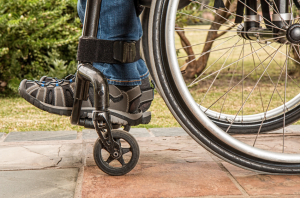If you are planning to take legal action, it is crucial to reach out to a specialized lawyer.
Confusion reigns in debates about lawsuits involving spinal cord injuries. Frequently, these injuries can be life-threatening or capable of rendering the victim permanently disabled or paralyzed.
Regardless of the type of spinal cord injury you suffer from, you may be eligible to file a lawsuit. An experienced lawyer can go over your case and offer targeted advice based on the specifics of your unique experience.
Types of Spinal Cord Injuries
It’s important to get solid medical evidence of your spinal injury or documentation that the injury aggravated an existing spinal problem. Given the high medical costs of some catastrophic spinal injuries, it’s little wonder that victims worry about financial resources. It costs more than a million dollars for the first year of treating a condition like high tetraplegia.
The types of spinal injuries include damage to different areas of the spine. The four main areas of the spine include the following:
Cervical Area
This is the top part of the spine that connects to the brain. Cervical injuries are often severe. Lesions affect the head, neck, shoulders, and the part of the brain that manages the central nervous system.
Thoracic Area
Next comes the thoracic area when moving down from the brain. Injuries in this area affect the back, chest, and abdominal muscles. This type of spinal injury rarely affects the hands and arms.
Lumbar Area
The next area is the lumbar region that controls the actions of the legs and hips. Injuries to this area might lead to difficulty walking. Victims may require the assistance of braces or a wheelchair for the rest of their life.
Sacral Area
The bottom area of the spine is called the sacral area, and injuries in this area of the spine affect the back of thighs, hips, pelvic organs, and buttocks. Sacral injuries seldom result in being unable to walk.

Medical expenses are just half the story. Spinal cord injury victims need education and therapy to achieve the maximum level of independence possible. Education about injuries can help improve most victims’ recovery.
Filing a Spinal Cord Injury Lawsuit
The truth is that anyone can file a lawsuit for any type of accident injury. The confusion comes from the other necessary elements of your case. Therefore, you can file a lawsuit, but the critical question is whether you should.
Your case needs certain elements to be successful. In short, your case needs liability, damages, and collectability. There must be damages or injuries that you have sustained, and the person held liable must be identified.
It’s important to hire a lawyer to handle the complexities of filing a lawsuit for a spinal cord injury. Contact a successful brain and spinal cord injury lawyer based in Brooklyn to begin developing a long-term medical and financial strategy.
Understanding Legal Liability
Spinal injuries can prove complex and expensive to treat, and determining liability becomes critical to recovering compensation. In an auto accident, you might have to prove which driver was liable. Liability is often shared between drivers if one bears the most responsibility for the accident, but the other driver’s actions contributed.
Courts determine what percentage of liability to assign to each driver. If you bear some responsibility, you can only recover the remaining percentage left after deducting your percentage from awarded compensation. However, you might be able to file with your own insurance company to recover the shortfall.
In many cases, multiple parties might bear some of the blame, and you can sue each of them. Generally, you must prove the other party was negligent in some way or deliberately arranged unsafe conditions.
Injuries can occur from:
- Work accidents
- Slip and falls
- Unsafe property
- Iced sidewalks
- Medical malpractice
- Toxic substances
- Fault devices
- Vehicle accidents
In cases of product defects, you can sue the product’s manufacturer, and you might be able to sue the store where you bought the product. Cases of spinal injuries often involve multiple parties sharing liability. Usually, you must prove that the liable party intentionally knew about the safety risk or should have known about it. However, that rule doesn’t apply in product defect cases that use strict liability.
Getting Legal Advice and Representation
If you are planning to take legal action, it is crucial to reach out to a specialized lawyer. Having an expert on your side, you can rest assured that you are aiming for the maximum amount of compensation.


Join the conversation!